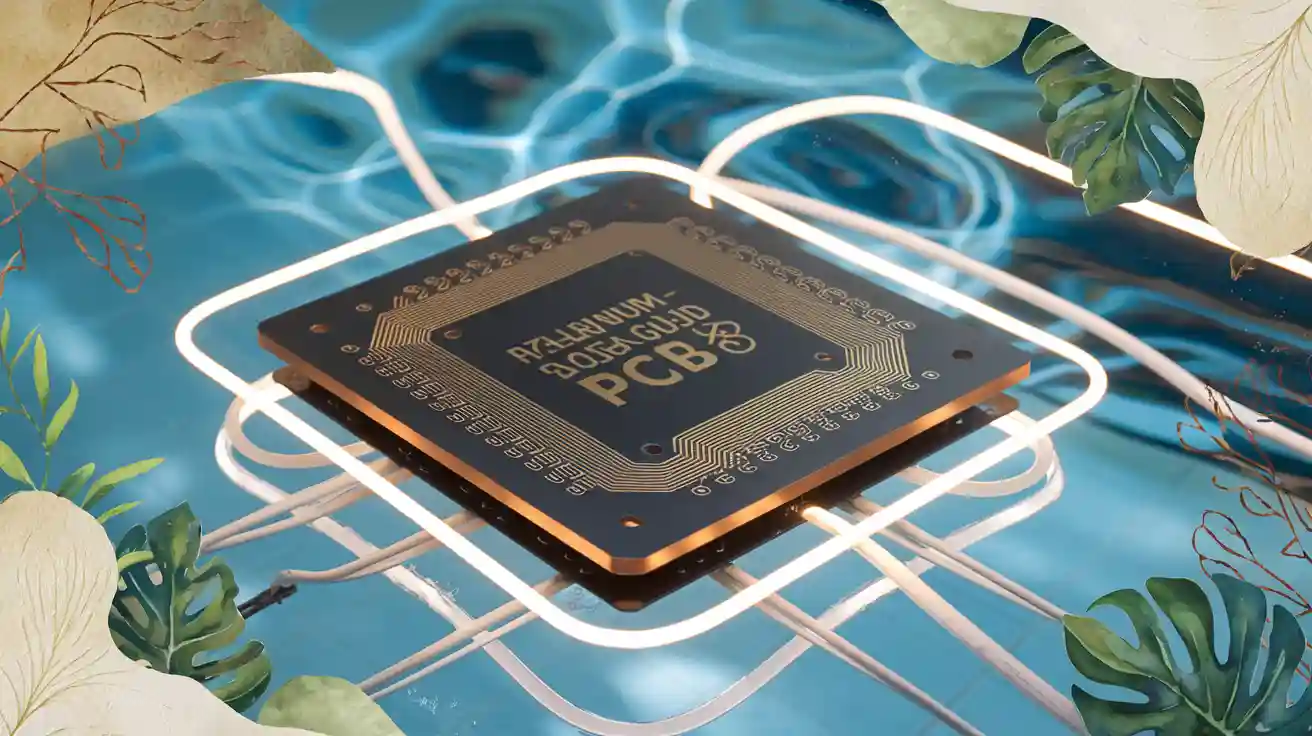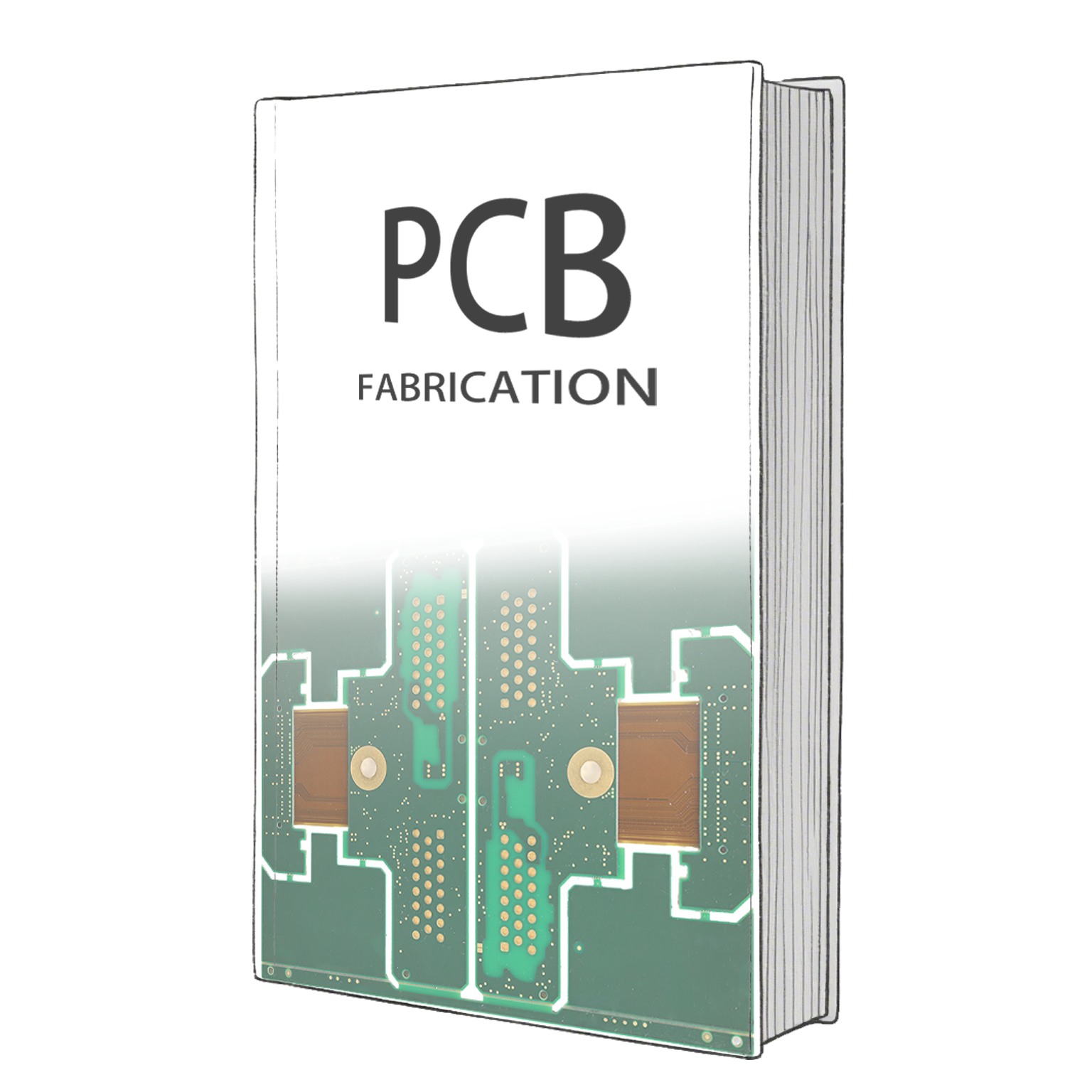4-layer aluminum-based nickel-palladium-gold metal-based PCB for German swimming pool LED lights
I believe technology can transform our daily experiences, including serene environments like swimming pools. Underwater LED lights now utilize aluminum-based PCBs with a 4-layer design. These aluminum-based PCBs effectively manage heat, ensuring the lights remain cool and operate efficiently underwater. They are durable and resistant to water and rust, making them ideal for pool applications. As a result, pool lights are brighter, have a longer lifespan, and consume less energy. They produce a captivating glow while being environmentally friendly.
Key Takeaways
- 4-layer aluminum PCBs help LED lights stay cool underwater. This makes the lights brighter and last longer.
- Aluminum is great for LEDs because it handles heat well. This keeps the lights reliable and shining brightly.
- Nickel, palladium, and gold in PCBs improve electricity flow. They also make the boards stronger and last longer.
- LED lights use less energy and work longer than old-style lights. They are a smart pick for eco-friendly pool owners.
- German-made PCBs are high-quality, accurate, and dependable. They work well in tough places like underwater lighting.
Understanding 4-Layer Aluminum-Based PCBs
Modern LED lights are amazing because of smart technology. A big part of this is the 4-layer aluminum-based PCB. These PCBs are super important for powerful LED systems, especially in tough places like swimming pools. Let me explain their layers, features, and why aluminum is great for LEDs.
4-Layer Metal Core PCBs Structure
The 4-layer design of these PCBs is a big deal. Each layer has a job and works together for great results. The layers are:
- Copper Layer: Moves electricity quickly for strong power flow.
- Dielectric Layer: Stops electricity leaks and helps with heat transfer.
- Metal Core (Aluminum): The main layer that spreads heat to keep parts cool.
- Base Layer: Gives support and protects from damage.
This setup helps the PCB handle high power while staying strong and reliable.
Cool Features of Aluminum-Based PCBs
Aluminum-based PCBs have many cool features that make them perfect for today’s tech. Here’s a quick look:
| Feature | What It Does |
|---|---|
| Thermal Conductivity | Moves heat away fast, great for powerful LEDs. |
| High-Frequency Performance | Keeps signals clear, good for communication systems. |
| Electrical Insulation | Stops electricity from leaking, keeping signals strong. |
| Mechanical Strength | Tough against stress, making it last longer. |
| High-Temperature Suitability | Handles heat well, helping parts last longer. |
| Industry Applications | Used in cars, planes, phones, and medical tools for tough jobs. |
These features make aluminum-based PCBs a must-have for reliable and strong performance.
Why Aluminum Works Best for LEDs
Aluminum is the best choice for LEDs, and here’s why. It handles heat better than materials like silicon. This keeps LEDs cooler, which makes their colors brighter and more reliable.
Aluminum also spreads heat well, so there’s no need for big heat sinks. This makes it great for bright lights in places like pools or offices. It keeps LEDs working longer and shining brightly.
I think aluminum is awesome because it works well and doesn’t cost too much. That’s why it’s used everywhere for LED lighting systems.
Material Composition and Advantages
Aluminum’s Role in Heat Management
Aluminum is amazing for improving how LED systems work. It’s great at handling heat, which keeps LEDs cool. Tests show aluminum substrates, especially with Cu2O coating, reduce heat buildup. For example:
- One test showed a junction temperature of 59.55°C.
- Another test recorded a temperature of 74.50°C.
These results prove aluminum helps LEDs stay cool and efficient.
Aluminum also has steady thermal resistance, which is very useful. It works well with different heat sink designs to spread heat evenly. In aluminum-based PCBs, it stops overheating, which is crucial for pool LED lights. This is why aluminum is so important in modern LED technology.
Nickel, Palladium, and Gold in PCB Design
The best materials for PCBs are nickel, palladium, and gold. Each metal has special benefits:
- Gold stops rust and keeps the PCB working longer.
- Palladium blocks nickel diffusion and improves soldering connections.
- Nickel gives strong support and keeps the structure stable.
These metals also help with advanced soldering, like lead-free methods. Gold makes soldering easier by helping joints form well. New palladium techniques have made layers more even and effective.
This combination creates a strong, lead-free surface for soldering. It’s also cheaper than older methods like electroless gold. That’s why these metals are popular for high-quality PCBs.
Benefits of Multi-Metal Layers for Performance
Using aluminum with nickel, palladium, and gold improves PCB performance. Here’s how:
- High Conductivity: Gold allows electricity to flow smoothly for LED systems.
- Reliable Contacts: Gold fingers stay connected and resist oxidation.
- Durability: Electrolytic gold makes PCBs last longer without wearing out.
These layers also help manage heat better. Aluminum spreads heat, while gold stops corrosion. Palladium protects nickel from spreading. Together, they make a strong system for pool LED lights.
This mix not only boosts performance but also makes PCBs last longer. It shows how smart material choices can create amazing results.
Growth of outdoor swimming pools in Europe
Outdoor swimming pools are becoming more popular in Europe. Homeowners and businesses are turning outdoor spaces into fancy retreats. This trend has increased the need for creative lighting, especially LED systems, to make pools look better and work well.
The beauty of LED lighting in swimming pools
LED lighting has changed how pools look and feel. It’s not just about light; it’s about creating a mood. These lights can glow in bright colors, making evening swims or parties magical. You can pick colors and brightness to match your mood or event.
- LED lights are flexible. They can change colors to fit any vibe.
- They save energy and last long, which is great for pool owners.
- Their soft light makes pools look calm and inviting.
Tip: Upgrade your pool with LED lights. They’re pretty and save money over time.
PCB determines the performance of LED lighting
Good PCBs are key to great LED pool lights. They help manage heat, keep electricity steady, and make lights shine better. Without strong PCBs, even the best lights won’t work well.
- Heat Management: Good PCBs move heat away to protect the lights.
- Electrical Design: Careful planning stops signal problems for steady lighting.
- Material Selection: Aluminum and copper spread heat quickly.
PCBs are like the backbone of LED systems. They keep everything working and lasting longer. Always choose high-quality PCBs, especially for tough places like pools.
Energy Efficiency and Longevity
Saving energy is a big win with LED lights. They use less power than older lights, cutting costs and helping the planet. Plus, they last a long time, so you don’t need to replace them often.
- LEDs work for years, even underwater.
- They fit Europe’s goal for greener living.
- Their energy savings and durability make them a smart buy.
Inspiration: Picture a pool glowing at night while saving energy. That’s the magic of LED lights with advanced PCBs.
Outdoor pools in Europe are opening doors for cool ideas. With LED lighting and strong PCBs, pools can be beautiful and eco-friendly. This is just the start of smarter pool designs for the future.
Importance of German Engineering Standards
German engineering is known for being precise and reliable. It stands out for its innovation and high-quality work. In PCB manufacturing, these traits are very clear. German standards make sure PCBs work well, even in tough places like swimming pools.
Precision and Reliability in PCB Manufacturing
German PCB makers aim for the best quality. They follow strict rules to meet exact details. This focus on accuracy makes their PCBs dependable, which is key for pool LED systems.
| Aspect | What It Means |
|---|---|
| Compliance with Standards | German PCB makers follow global rules like ISO standards. |
| Quality Control Processes | They test every PCB to ensure it meets all requirements. |
| Advanced Technologies | Tools like laser drilling improve accuracy and reduce mistakes. |
I admire how they use advanced tools like laser drilling. This makes their PCBs more precise and less prone to errors. Their careful work helps PCBs last longer and perform better.
Compliance with International Quality Standards
German engineering doesn’t just meet local rules. It also follows global standards. This makes their PCBs trusted around the world.
| Certification | What It Ensures |
|---|---|
| ISO 9001 | Guarantees consistent product and service quality. |
| ISO 14001 | Focuses on reducing harm to the environment. |
| ISO 13485 | Ensures safety and quality in medical devices. |
These certifications prove that German manufacturers care about quality and the planet. I think this focus makes their PCBs great for eco-friendly and high-performing uses.
Improving Performance with German Standards
German engineering goes beyond just meeting rules. It works to make things better. For example:
- In cars, 3D-MID tech makes parts easier to assemble and cheaper.
- Medical devices become smaller and work better for patients.
- High-speed tools like Altium Designer keep signals clear and reduce interference.
- AI tools like CR-8000 Design Force make layouts faster and fix mistakes.
These ideas inspire me. They show how German engineering turns dreams into real solutions. By using these standards, we can make PCBs that are both reliable and groundbreaking.
Note: German engineering isn’t just about being accurate. It’s about building things that last and earn trust.
Applications in Swimming Pool LED Systems
Use in Underwater LED Lighting
Underwater LED lights have changed how pools look. They create a glowing effect that makes pools magical. These lights don’t just brighten the water; they make it come alive. Soft blue lights are great for relaxing swims. Bright colors are perfect for pool parties.
The secret to their reliability is the aluminum-based PCB. It keeps the lights cool and working well underwater. This is important because underwater conditions can be tough. These PCBs make the lights last longer and work better. I suggest them for anyone wanting a beautiful and durable pool lighting system.
Tip: Pick underwater LED lights with strong PCBs for lasting beauty.
Examples of Advanced Pool Lighting Designs
Some pool lighting designs are truly amazing. Programmable LED systems can create light shows with shifting colors. Imagine a pool that looks like the night sky or ocean waves.
Another cool idea is adding LEDs to pool steps and edges. This makes pools safer and gives them a modern style. Some designs even use motion sensors to light up areas as you move. These ideas mix safety, style, and creativity perfectly.
Future Trends in PCB Technology for LED Systems
The future of pool lighting is exciting. Smart lighting systems are becoming popular. You can control brightness and colors using your phone.
Eco-friendly materials for PCBs are also on the rise. These materials help the planet while keeping performance strong. Better heat management and smaller parts will make LED systems even better. These changes will make pool lights smarter and more efficient.
Inspiration: Pool lighting is getting smarter and greener. Try these trends for a stunning pool.
I think the 4-layer aluminum-based nickel-palladium-gold PCB is amazing for pool LED lights. It handles heat well, fights rust, and saves energy. This makes it perfect for underwater lighting. These PCBs help lights shine brighter, last longer, and make pools look incredible.
German engineering makes it even better. Their careful work and focus on quality ensure these PCBs work great, even in tough conditions. This builds trust in their products.
If you want better pool lighting, check out these advanced PCBs. They mix smart design, strength, and beauty to give outstanding results.
FAQ
Why are aluminum-based PCBs great for pool LED lights?
Aluminum-based PCBs spread heat well, keeping LEDs cool. They don’t rust and work underwater easily. Their strength and energy-saving features make them perfect for pool lights.
How do nickel, palladium, and gold help PCBs work better?
These metals improve electricity flow and stop rust. Gold keeps signals smooth, palladium protects nickel, and nickel adds strength. Together, they make PCBs strong and reliable for LED systems.
Are 4-layer aluminum-based PCBs good for the environment?
Yes! These PCBs save energy by making LEDs more efficient. Aluminum can be recycled, and the layers last long, reducing waste. They’re a smart choice for eco-friendly pool owners.
Can these PCBs handle tough underwater conditions?
Yes! They resist water, rust, and temperature changes. The aluminum core spreads heat, and the metal layers add strength. These PCBs work well even in hard underwater environments.
Why pick German-engineered PCBs?
German-made PCBs are precise, strong, and meet global rules. Their advanced methods make high-quality PCBs that last longer. Their focus on quality makes them a trusted choice for pool LED lights.
Tip: Choose German-engineered PCBs for top quality and reliability. 🌟



















